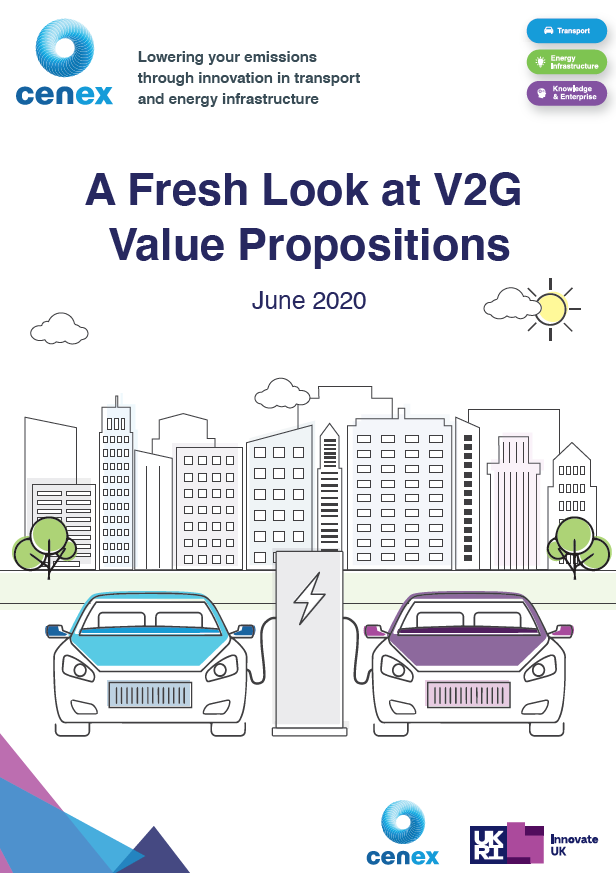Cenex UK publishes study “A Fresh Look at V2G Value Propositions”
V2G has often promised to be a ‘golden egg’, providing both economic value to the customer and environmental benefits to the energy system. The shift to more focussed value propositions may therefore feel like a step away from this lofty ambition, reducing the impact and therefore the value of the technology.
The purpose of this study was to identify alternative value propositions and evaluate the benefit they deliver to the stakeholders involved, either financial or nonfinancial, as well as the scale of these opportunities.
Lessons learnt from nine recent V2G demonstrator projects were collected; Smart Solar Charging (the Netherlands), City-Zen Smart City (the Netherlands), SEEV4-City (North Sea Region), Sciurius (UK), Powerloop (UK), e4Future (UK), V2GO (UK), V2Street (UK) and Parker (Denmark).
The five key value propositions identified in this Cenex study were:
- Revenue-Generating Energy Trading
The economic savings at a per-customer level may, in some cases, be insubstantial but the savings at a national level would be significant and would result in lower energy bills for all customers. In addition, the impact of replacing traditional power stations with flexibility services from V2G could offset hundreds of thousands of tonnes of CO2 each year.
- Resilience
With V2G prices dropping, the provision of this service by V2G could replace a number of existing traditionally diesel back-up power systems or battery UPS systems or reduce their usage. This would reduce or eliminate the costs associated with maintaining and operating these systems – producing economic benefits for the customer.
- Benefit to Society
This proposition focuses entirely on delivering environmental and societal benefits, which in turn should be returned to the customer by way of lower taxes and improved quality of life – for themselves and for future generations.
- Enhanced Battery Management
Based on current evidence, V2G could extend the life of an EV battery by about 10%. By extending the life of the battery, V2G would help to reduce end-of-life waste and demand for mining of new materials, along with the emissions associated with these activities. Prolonging the life of an asset also allows customers to utilise vehicles over a longer period, reducing the total cost of ownership for the customer.
- Potential Net-Zero/Self Sufficiency
Optimisation of self-consumption can be combined with arbitrage to create an economically and environmentally attractive proposition for customers. This works to increase the use of renewable energy local to the point of generation and avoid transmission losses and network operation/re-enforcement costs which would otherwise be passed on to the end customer through their energy bills.
As a result, this document also aims to provide recommendations to key industry stakeholders (incl. policy makers, manufacturers, and investors) on how to move forwards in investigating these opportunities.
You can download the full study here.
Cenex has been an active innovator in the research and development of Vehicle-to-Grid (V2G) technologies and business models since 2016, including being responsible for key milestones such as installing the first domestic V2G unit in Europe and the first commercial V2G unit in the UK. Over this time, we have delivered 11+ public V2G projects, including feasibility studies, proof-of-concepts and real-world demonstrators; as well as providing independent advice and support to numerous organisations.
Please get in touch with us for an independent expert advice. You can reach us at hello@cenexgroup.nl



